





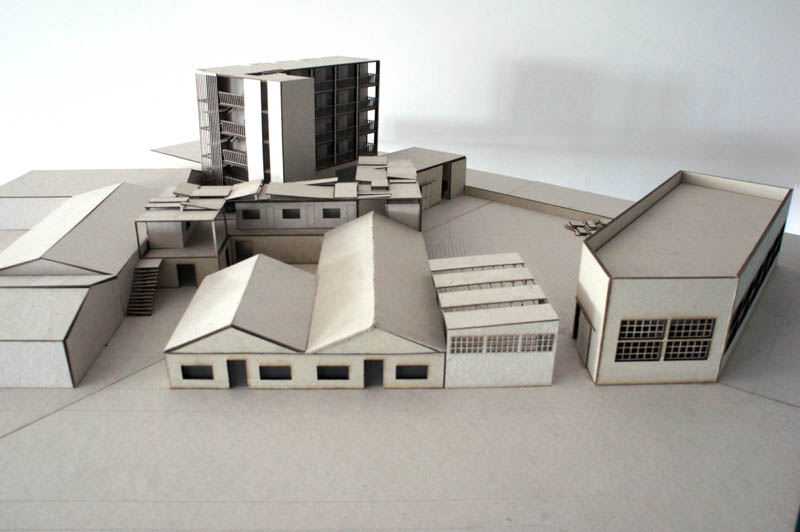

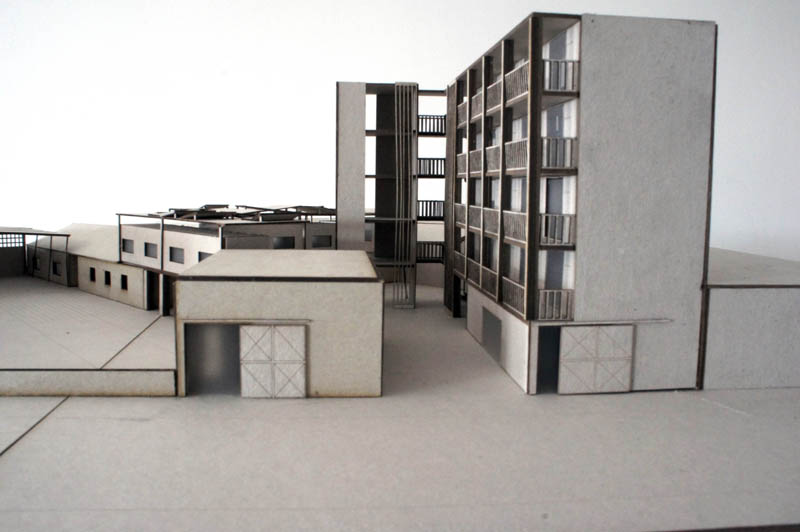

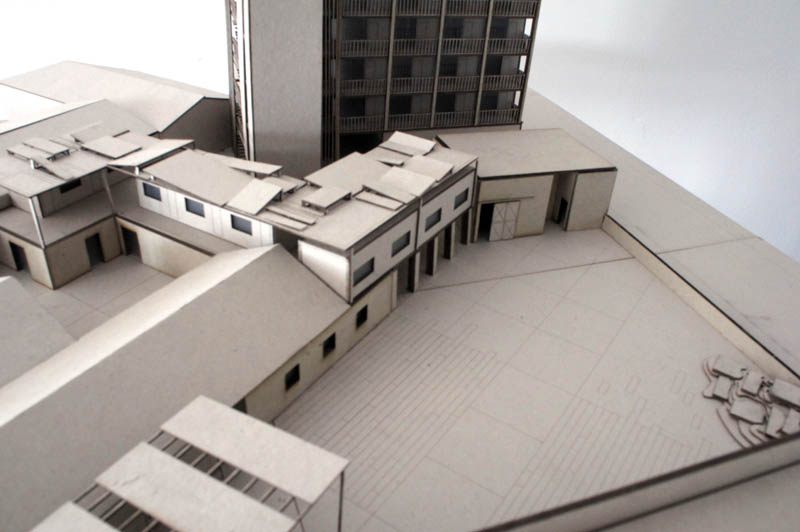

The area chosen between the streets Chaidou - Sekeri - Alamanas belongs to the Old City of Volos and is located opposite the Polytechnic School of the University of Thessaly.
The complex of buildings consists of six individual buildings which formerly used to be warehouses, workshops and small industries and were low industrial/ craft buildings of the last century. Based on the above two criteria, namely the location and the “architecture” of buildings, they were selected to be studied in order to formulate and were modified to accommodate integrated facilities of the graduate programme of the Department of Architecture School of the University of Thessaly.
It is a study which reconstructed old buildings both internally and externally. Additionally, spaces were created which are suitable to accommodate all the activities and needs of such an educational level. In the first phase of the study, we maintained the volume of the buildings that defined the main floor plan. Thus, in the ground floor of the main building we meet the place which houses presentations and reports. This building provides two smaller rooms that are suitable for students’ meetings and lectures.
On the other side of the complex, there are laboratories of the graduate programme of the Architecture Faculty, consisting of a smelter, carpentry, computer room, printer room, laser-cut, 3D plotter and clerical facilities.
In the background there is the staff room and the information desk.
At the back of those public utilities, there exist accommodation facilities for both the students and the teachers. These can be found at the four storey towering building. This change from public to private use is indicated somehow by the different kinds of materials.
Advancing the construction, the roof created over the rooms of computers and printers as well as other spaces, lined nine equal constructions that are places for individual study desks of diplomatic works of students.
These places are protected from the sun and rain by a shelter. The shelter was constructed from metal surfaces, which were found in this place, trying on the one hand to refer to the past use of this site and on the other hand to convey an atmosphere of used, worn and aged.
Supervisors: Manolidis Kostas, Philippitzis Dimitris
Reference Number: 476
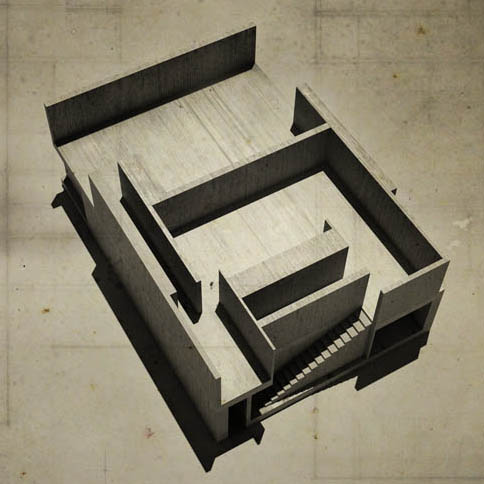

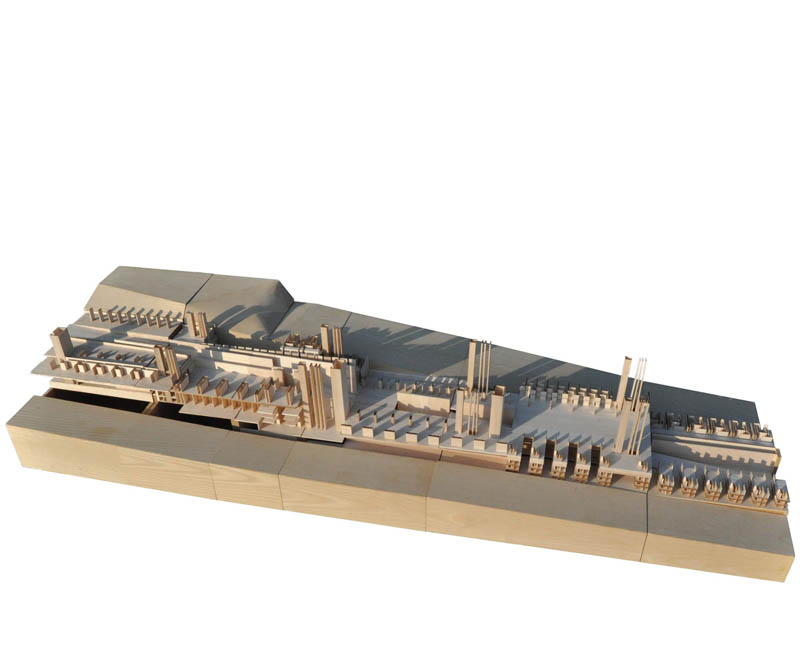





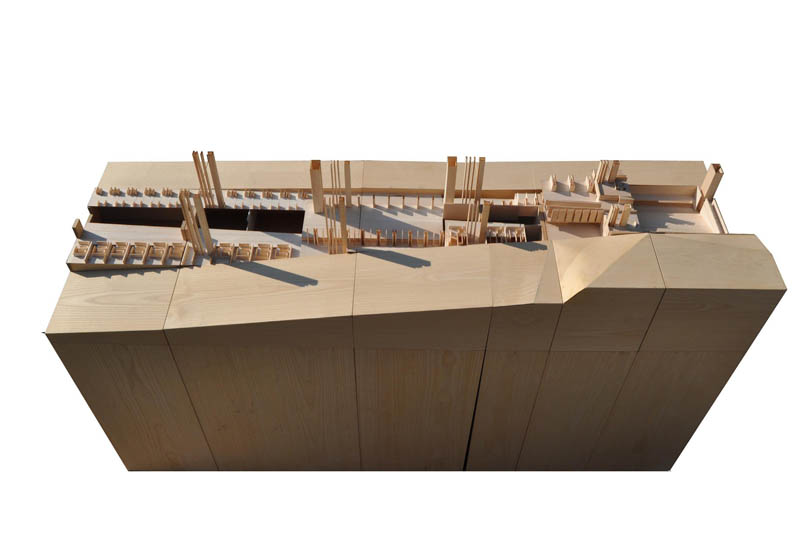

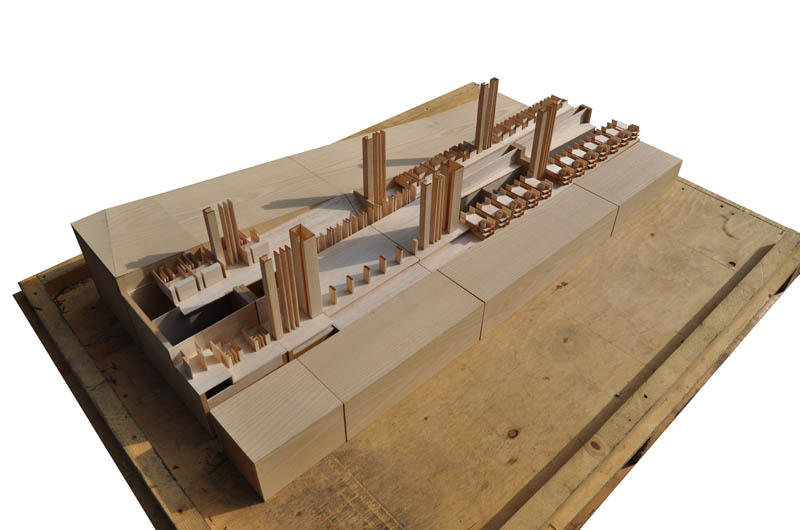

Turning to exit 18 of Attica Toll way, an off road stop is appeared, as one parallel copy of the straight line of the road, as a strip of land within the area of a residual site. The structure is located between a the dynamic flow of a road and the slow changes of the agricultural landscape. At the same time is an elongated, linear, visual distinction of the above, which delimits their differences, their own accelerations and decelerations.
At the first, the structure is a single parallelepiped building, which is composed of individual porous areas with different densities and dimension scales, which indicates the different rhythms.
Supervisor: Paniyiris Costis
Reference Number: 470
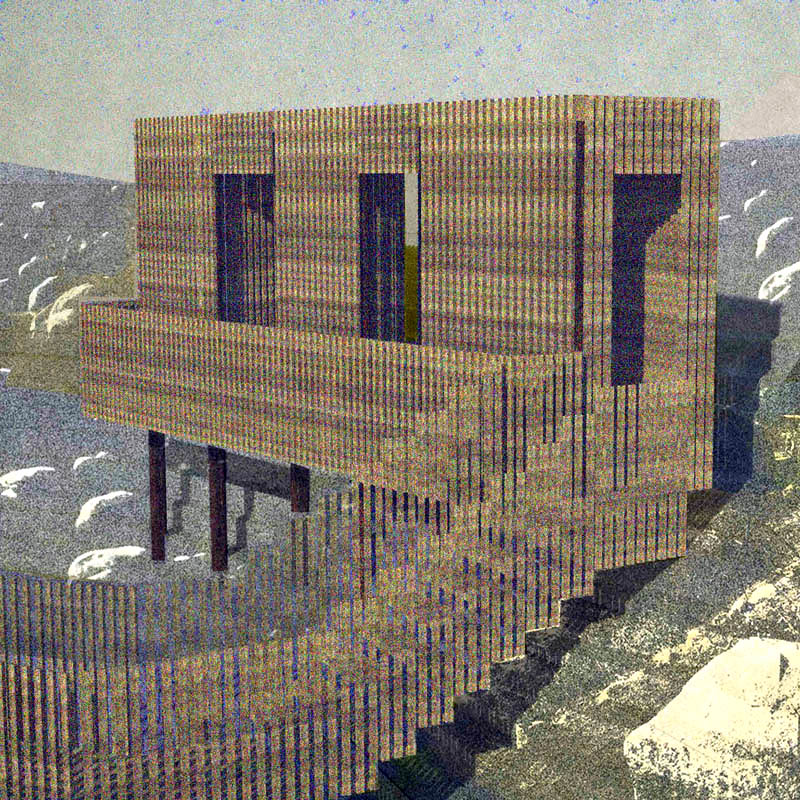

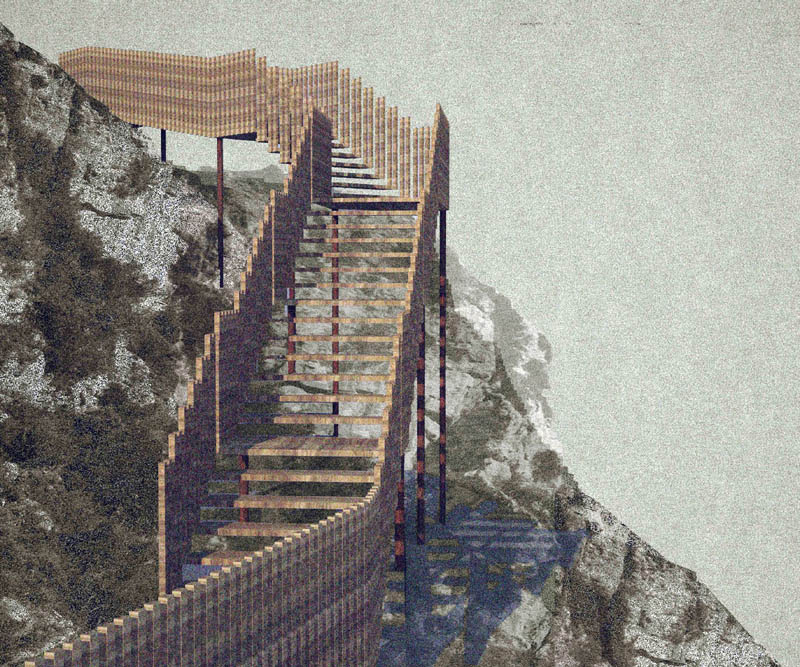

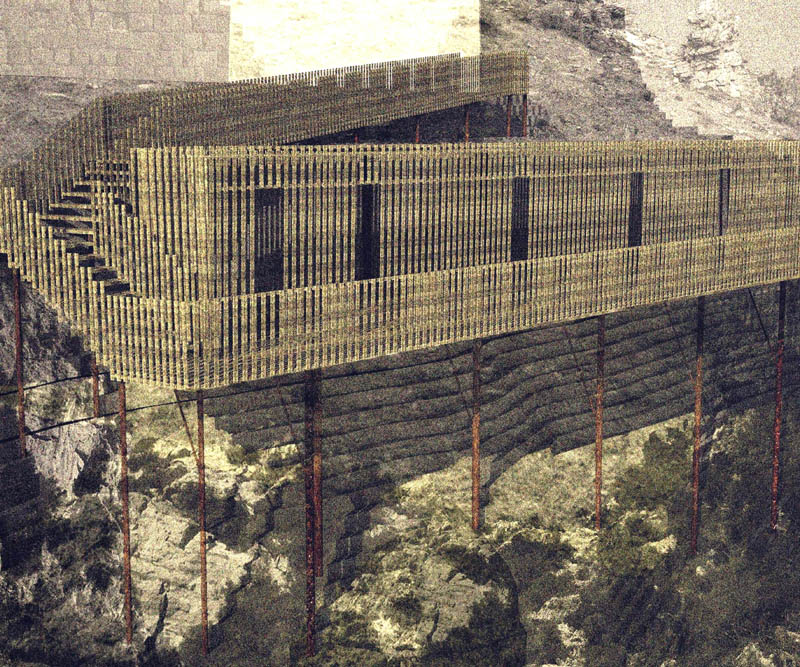

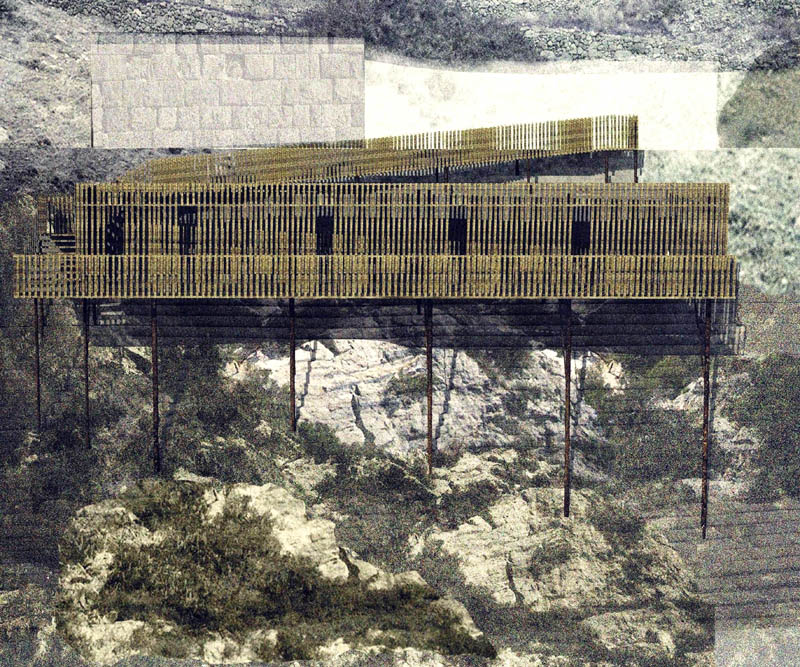

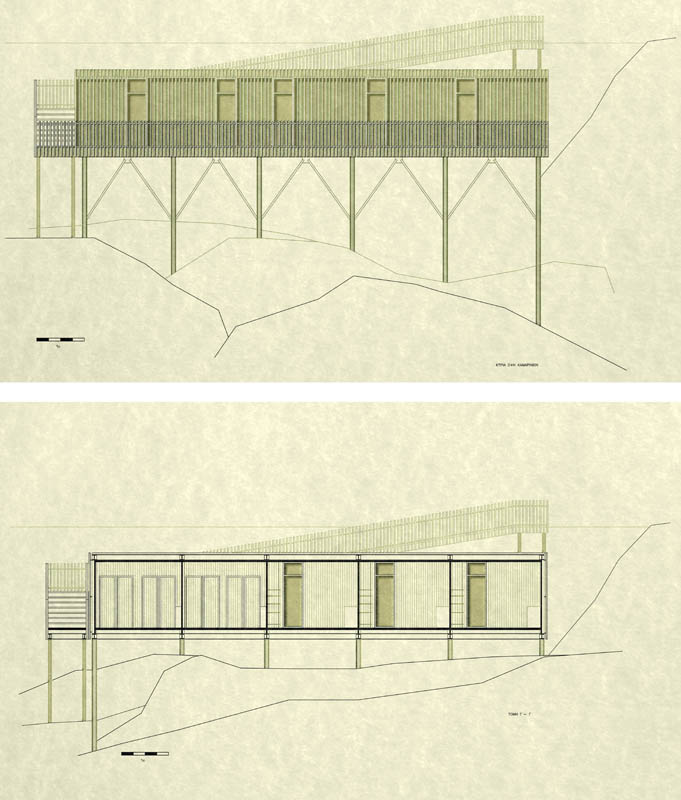

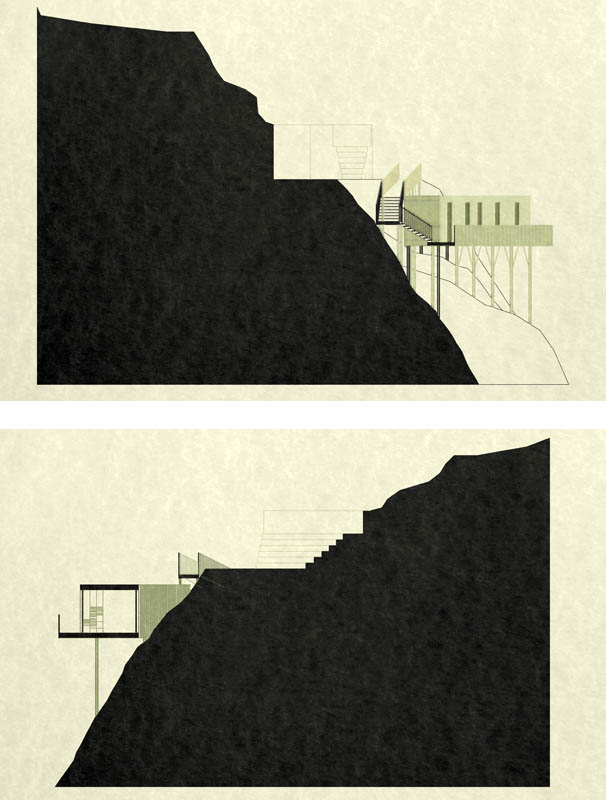

The term Landscape is subject to many interpretations, it can be changeable, but also it can stand unchangeable, it can tell many different stories, but sometimes it stays silent and incredibly imposing. Maybe the concept of time which is reflected on the landscape, is more interesting. In these quests, on which the person has the main role, are going to be answered on this thesis. In this thesis, through the architectural intervention in Klima’s settlement archaeological site, I attend to give a re-interpretation on the concept of landscape. This archaeological site is no longer inaccessible. The ancient theater is going to be an attraction to the people, who desire not only to enjoy a pleasant walk with the view of the sea or to admire the architectural incorporation of the space in the land, but also to sprightfully participate in the process of re interpretation, as a part of the audience.
How does time operate as a link between the past and the present? Is time non linear or is an entirety which is incorporated in the present? The sensible linear time is depicted by the corrosion of the landscape and the buildings. The real non linear time is expressed by the architectural intervention, and it gives the opportunity to the person to be an effective part of space and to live the experience of space. This new architectural intervention appears as the means that joins the past with the present and the future.
The new functions are simple and they appear to be a part of nature. Their figure and their materials are trying to interact with the landscape. The new constructions are following the lining of land’s terrain. The buildings are two, the first is the greenroom which is related with the accommodation of the artists, and the second, the smaller one, is for serving the audience and generally the visitors. These new functions and their surrounding area are going to be accessible through a new system of stairs and ramps, which allow users’ safest circulation. The aim is the creation of a walking path, which is going to join the fragments of history in a united state of existence.
Supervisor: Kanarelis Theoklis
Reference Number: 478
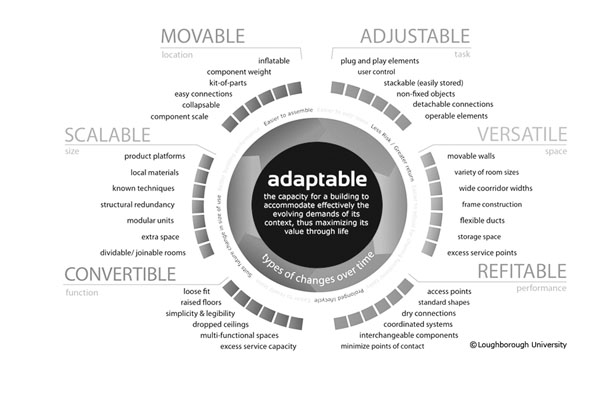

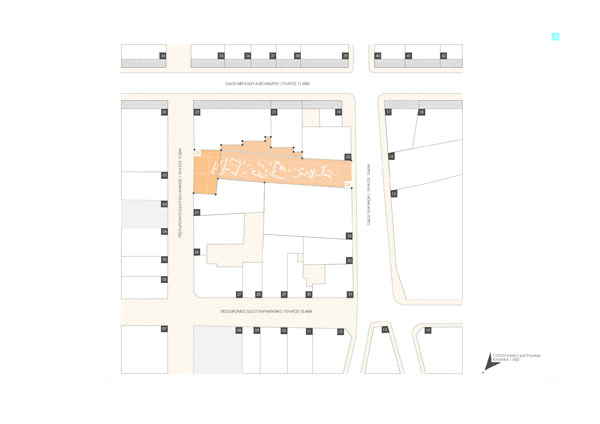





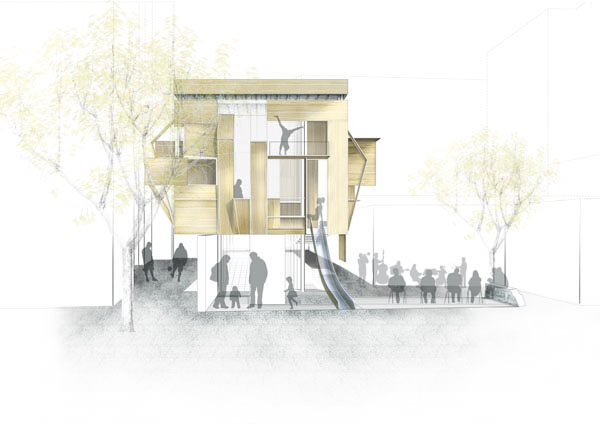

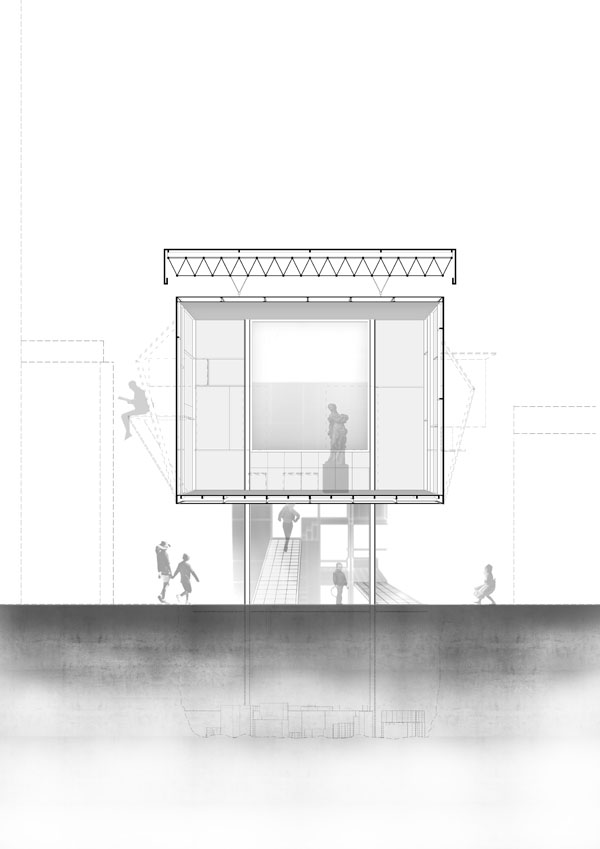

Ruins stand out among the rest elements of the urban scape as spatial relics of the past.
In the cities, where the coexistence of different time layers can be easily noticed, connections between the existent ruins and the urban scape are being explored, as well as ways of managing the inevitable wear of today’s constructions in the future. The project intents to understand the basic parameters that lead to the disrepair of a dwelling in order to later suspend the disrepair of the proposed construction. This suspension can be achieved only if it is considered from the very beginning of the design process.
Contrary to the fact that for centuries the ruin is being evaluated as a fragment, this proposal intents to create bonds between the ruins of different time periods which already exist in the particular area of the intervention and also to integrate the proposed construction into the network of public spaces in the area of Keramikos. In this way, the future ruin of this specific construction disclaims the attributes of a fragment and as a consequence its disrepair is suspended as long as it consists part of a whole.
Additionally, as far as the aesthetics of the distorted morphology of the ruin is concerned, the separate elements constantly change the scale, the movement, the incoming light and other aspects of the empirical perception of space because of the unceasing struggle between Form and Nature. Therefore, a predesigned transformable shell aims directly at the suspension of the disrepair. The transformation process concerns the rearrangement of the spatial elements and the raise of different space values.
Due to the fact that the public space can be considered as an important component of the theatrical experience, the ruin is also being studied regarding to a more scenographical view. The proposed construction forms a three-dimensional transformable dynamic setting which organizes the action at the same time inside and outside. The views and the movement inside and around this shell undertake an important role in the public sphere.
Finally, the functionality of the construction keeps the disrepair away through the alternation of uses and the transformation of the shell. At this point is claimed the conversion of the private space into public, where the citizens can familiarize with the construction by reclaiming the facilities that the shell provides them in accordance with their needs.
Supervisor: Antonas Aristide
Reference Number: 429




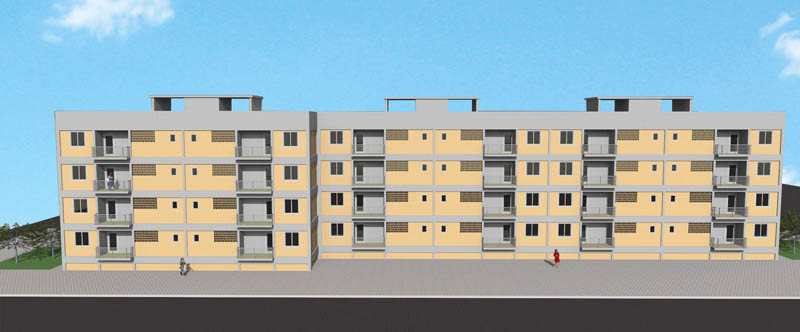



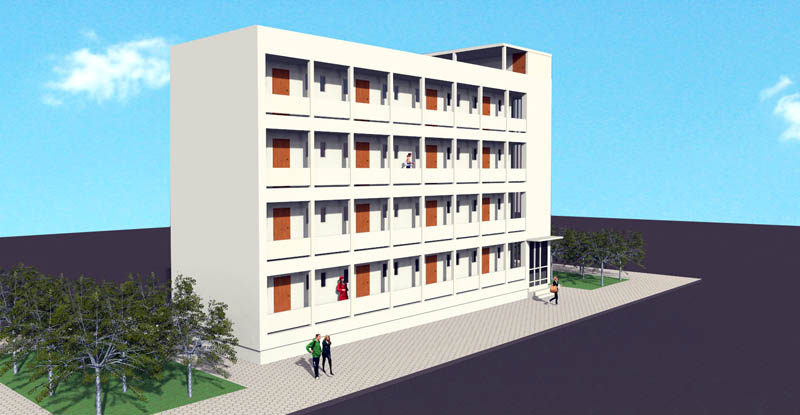

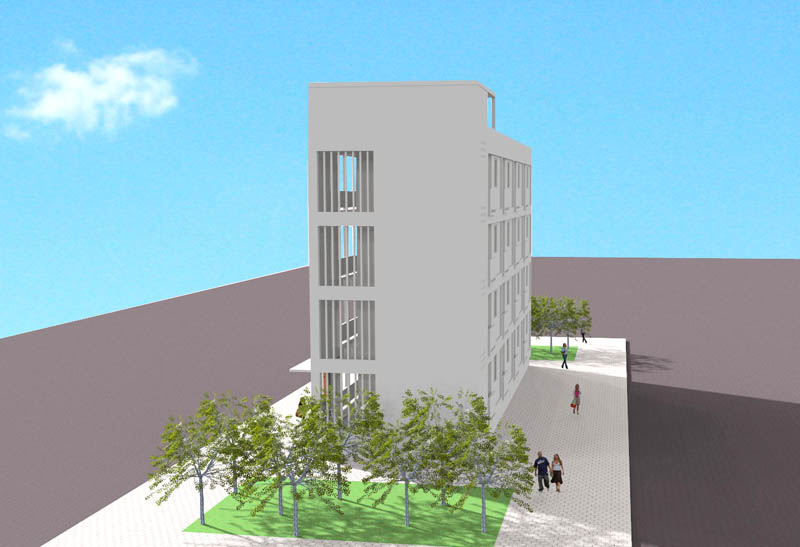

The present diploma project has to do with the labour housing of Xirokambos in Nea Ionia, Volos. The compound was completed in the 1970s by the Ministry of Welfare and covers a surface of 26,300 m2, while each of the buildings covers a surface of 320 m2. Today it is a quite degraded area, in the north-eastern part of the town. The buildings are characterized by the corrosion of materials and inappropriate additions by the inhabitants. The apartments are small, with variable internal temperature, while the pattern of the buildings in the area and the insufficient lighting makes the compound quite dangerous.
An effort is made to intervene in order to enable an architectural, energy and urban upgrade. The most north-eastern block is chosen, due to the fact that it is the most exposed to the harsh climate conditions. Therefore, we try to upgrade the façades of the buildings by adding erkers and balconies. The apartments of each floor are now 4 instead of 6. Glass partitions are added to the exterior of the stairwells, which are framed by shutters. The stairwells end up on the rooftop where they join and make a sheltered communal space. Therooftopbecomesgreenduetotheplanting. Elements of the old façade of the buildings remain, because the main purpose is to preserve parts of the buildings as they are nowadays.
A mini community center is added to the compound and includes a great deal of functions: a kindergarten, a library, a cultural multicenter and a café. The transformations in this building should be more intense. It has to be distinctive because of its functions and at the same time keep elements of the old building.
In parallel with the architectural transformations, we study the bioclimatic handling of the buildings. According to the plans and the orientation, the environmental elements of the area are under survey and so the building is getting more renewed and padded with new materials that maintain the internal thermal comfort, reduce the losses and make it even better for residence.
Eventually, we make an effort to transform the urban pattern, a transformation that will lead to a safer area. As for that, new planted spaces, pedestrian areas, lighting, spaces for public activities as well as parking lots both on the surface of the road and underground to cover the needs of each building, are planned to take place in the area of the compound.
Let us note that all the transformations are made with absolute respect to the building and its environment and according to the needs that were presented by the inhabitants.
Supervisors: Adamakis Kostas, Tsangrassoulis Aris
Reference Number: 477


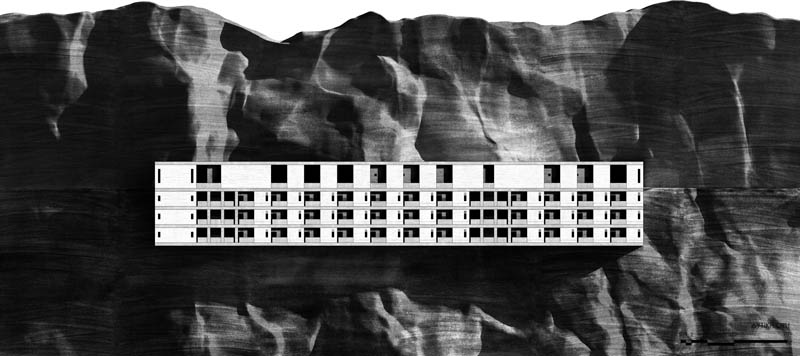

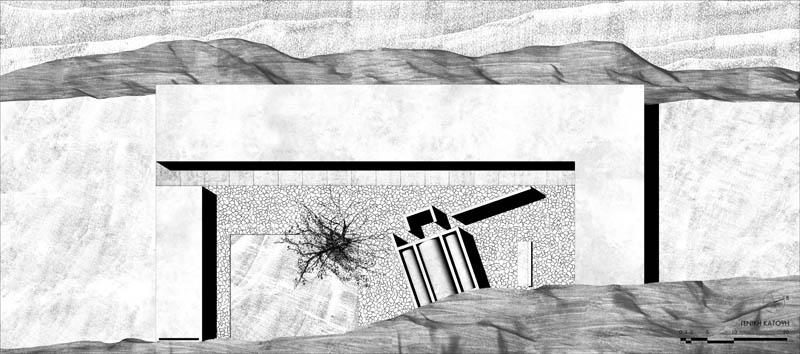

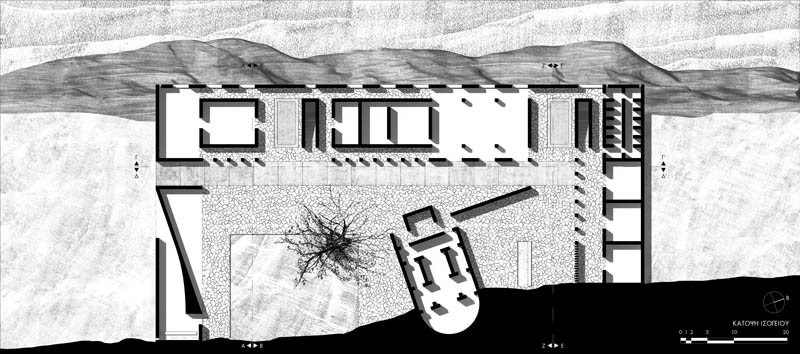

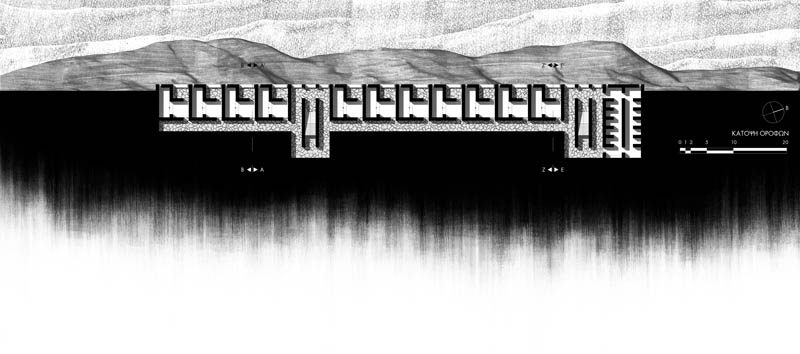

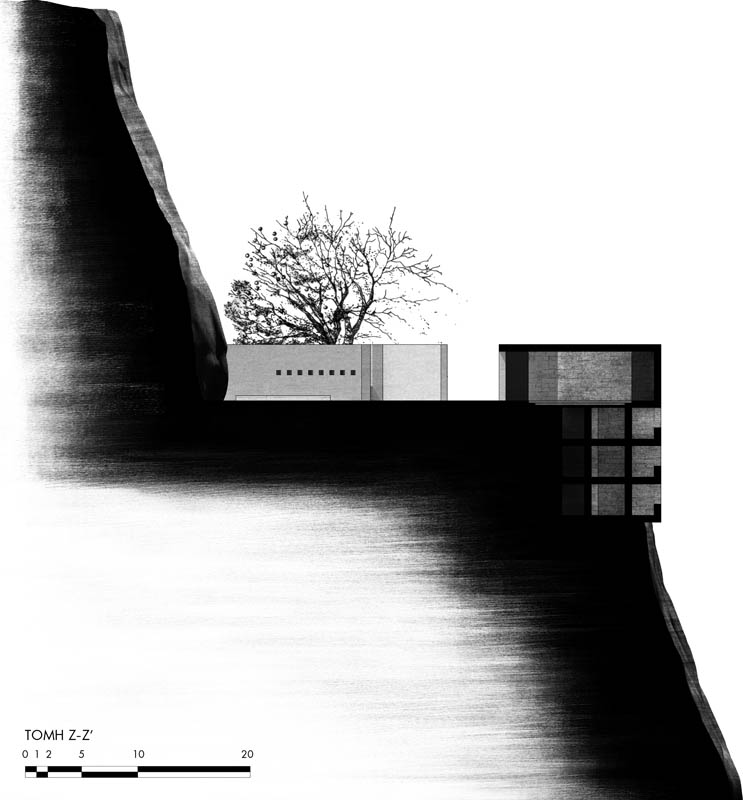

This diploma project concerns of the design of a monastery at the countryside in the north of Tinos island. The monastery of the Madonna of Annunciation hosts 33 monks and is sited on a plateaubetween the steep slopes of the rock, facing the Aegean Sea. The monastery consists of 33 cells, main church, dining room, archodariki (guest quarters), fountain, library, chapel, kitchen and accommodation facilities for 12 guests.
By the main entrance lies the monastery's chapel. In this space the visitor can stop and pray before entering. Everyday life is organized around the main courtyard. The main church is in the centre of the composition. The dining room, the archodariki, the dormitories and all the other facilities are arranged around the courtyard forming the boundarybetween the inner space and the external environment. Separating the two is not strictly guaranteed, but is indicated by the overall layout.
The cells are organized in multiple floors down the rest of the monastery all facing the sea. They are the personal space of the monks equipped with the bare essentials. They are separated from the other facilities but at the same time they are unified as a whole holding the life that lies above them one by one and all together at the same time.
Supervisor: Kanarelis Theoklis
Reference Number: 474

